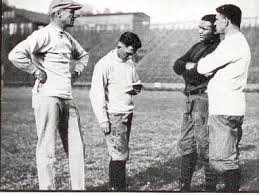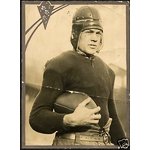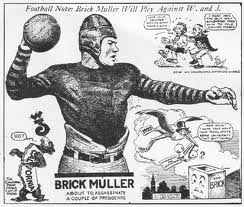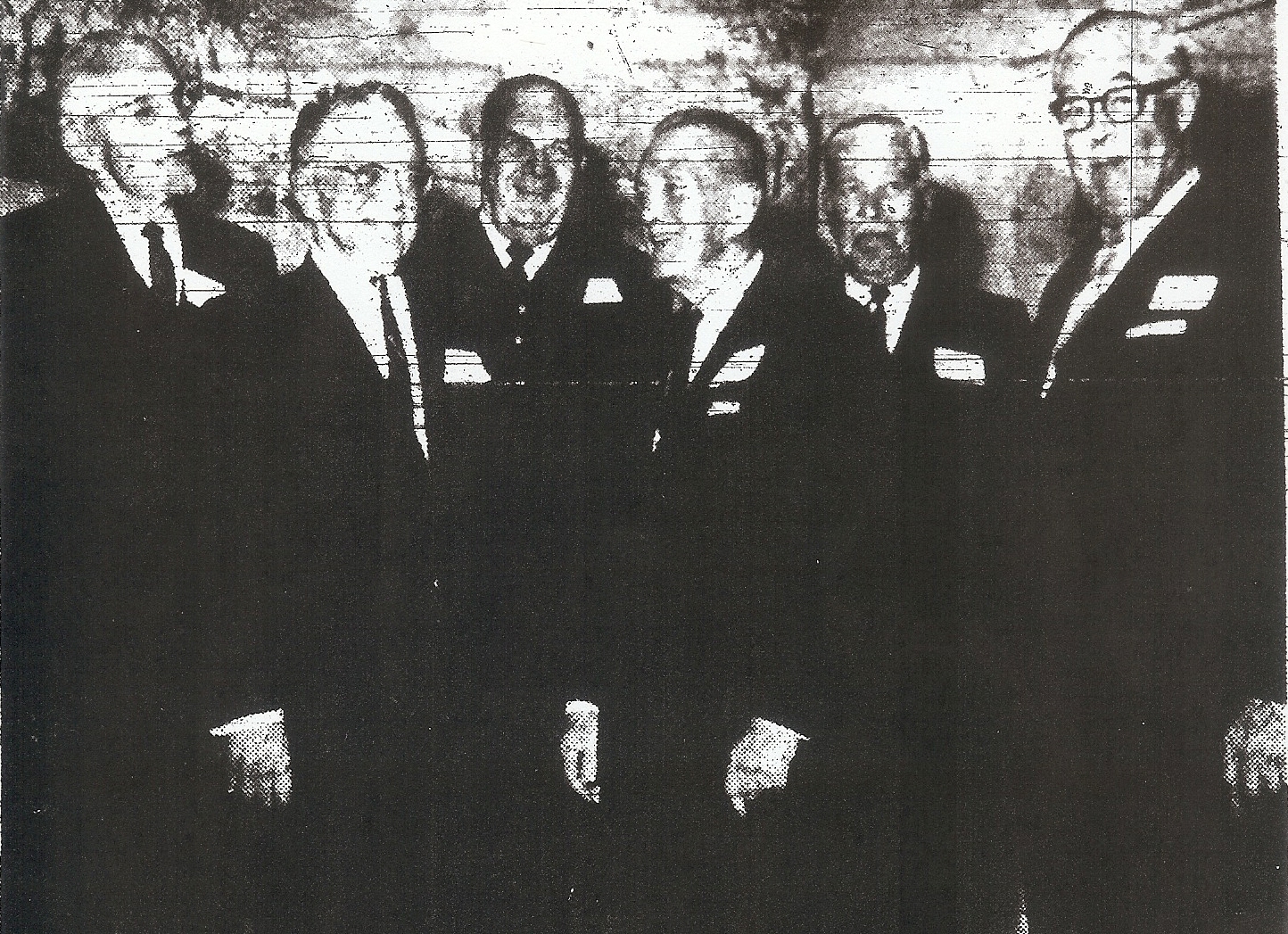1916: The Legendary Hilltoppers
The 12-0 season, Southern California championship, and declaration as national champions was just the beginning for coach Clarence (Nibs) Price and many of the San Diego High Hilltoppers.
Price left the school after the 1917-18 school year and made his way back to Price’s alma mater, the University of California at Berkeley, joining the staff of head coach Andy Smith in 1920.
Price was the Bears’ head coach following Smith’s death and guided the Bears to a 27-17-3 record from 1926-30, including the 1929 Rose Bowl, made famous by the wrong-way run of California’s Roy Riegels.

Price was head coach of the Bears’ basketball team from 1924-54. His teams won 453 games, seven conference championships, and went to the Final Four of the 1945 NCAA tournament.
Perhaps most significant, seven members of the 1916 Hilltoppers were recruited by Price and played on the 1920 California squad that was 9-0, outscored opponents, 510-14, and defeated Ohio State, 28-0, in the Rose Bowl.
The Bears were known as the “Wonder Team”. In 1953 the Helms Athletic Foundation in Los Angeles named the 1920 squad the greatest in collegiate history.
–Bryan (Pesky) Sprott was known more in college as Albert, his given name, and was the offensive catalyst for the Bears in the Rose Bowl, gaining 92 yards in 20 carries and scoring two touchdowns.
Karl Deeds, another former Hilltopper, raced 61 yards with an interception for the Bears’ final touchdown.

Sprott scored seven touchdowns against Stanford in 1918.
A star runner in high school, Sprott was fifth in the 800-meter run at the 1920 Olympics in Antwerp, Belgium.
–Harold (Brick) Muller won the state high jump championship in 1918.
Muller won the state high jump and broad jump in 1919 after transferring to Oakland Technical and was a silver medalist at 6 feet, 2 ¾ inches, in the 1920 Olympics.
Muller threw a pass a reported 57 yards in the air for a touchdown in the 1921 Rose Bowl. It was said to be the longest pass in football history. The future orthopedic surgeon was the first West Coast player to be a collegiate all-America and won several all-time all-America honors.
Having graduated from medical school, Muller signed with a professional team, the Los Angeles Buccaneers of the fledgling American Football League, then became the team’s head coach in 1926.

For many years Muller served as the team doctor for the university’s athletic teams.
Walter (Dutch) Eells, “Klean Kut” Karl Engebretsen, Stan Barnes, and Olin (Cort) Majors also played for the 1920 Bears.
Barnes became a federal judge and Majors was a special assistant to the University of California chancellor.
The esteem with which the 1920 teammates were held was such that Sprott’s death in 1951 resulted in giant headlines in Bay Area newspapers.
Sprott, who was hard of hearing, did not see an oncoming freight train. He dodged the train at the last moment but hit his head on the iron step of an stationary box car nearby.
Sprott was on his lunch break from his workplace in nearby Antioch and enjoying a favorite hobby, counting and comparing numerals on passing trains.

WHAT IS “FOOTBALL”?
Nibs Price may have asked that question when he became coach at San Diego High in 1914.
The 5-foot, 6-inch Price had been a star high school footballer in Iowa but discovered that rugby was the prevailing sport when he enrolled at the University of California.
Price had to re-learn the difference between football and rugby. Rules of the gridiron game had changed dramatically.